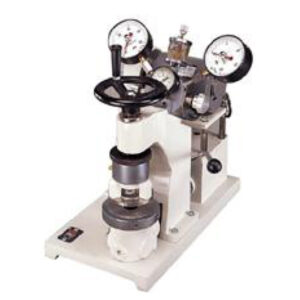Clamp the specimen tight between the plates with rubber diaphragm placed under the specimen. Exert pressure on the diaphragm for it to expand. The gauge records the maximum pressure needed to burst the specimen as its bursting strength. Common types of material are paper, textile, leather, etc.
ISO-2759, GB/T 6545, JIS-P8112, JIS-L1018, ASTM-D2210, TAPPI-T403
Product Description
Clamp the specimen tight between the plates with rubber diaphragm placed under the specimen. Exert pressure on the diaphragm for it to expand. The gauge records the maximum pressure needed to burst the specimen as its bursting strength. Common types of material are paper, textile, leather, etc.
QC-115 series perform tests at a different speed and under different pressure conforming to test standards.
Specification
| Model | QC-115 (high pressure) | QC-115A (low pressure) | For textile | |
| Speed of pressurization | 170±15ml/min | 95±5ml/min | 98±4ml/min | |
| Pressure gauge | Diameter 4” | |||
| Capacity (kgf/cm²) | 20, 50, 100 (choose two) | |||
| Plate diameter | Upper plate | 31.5 ± 0.05 mm | 30.5 ± 0.05 mm | 30.5 ± 0.05 mm |
| Lower plate |
31.5 ± 0.05 mm | 33.1 ± 0.05 mm | 30.5 ± 0.05 mm | |
| Pressurization patterns | Pressurization, return | Pressurization, return | Pressurization, neutral, return | |
| Dimension | 35 x 53 x 50 cm | |||
| Weight | 60 kg | |||

